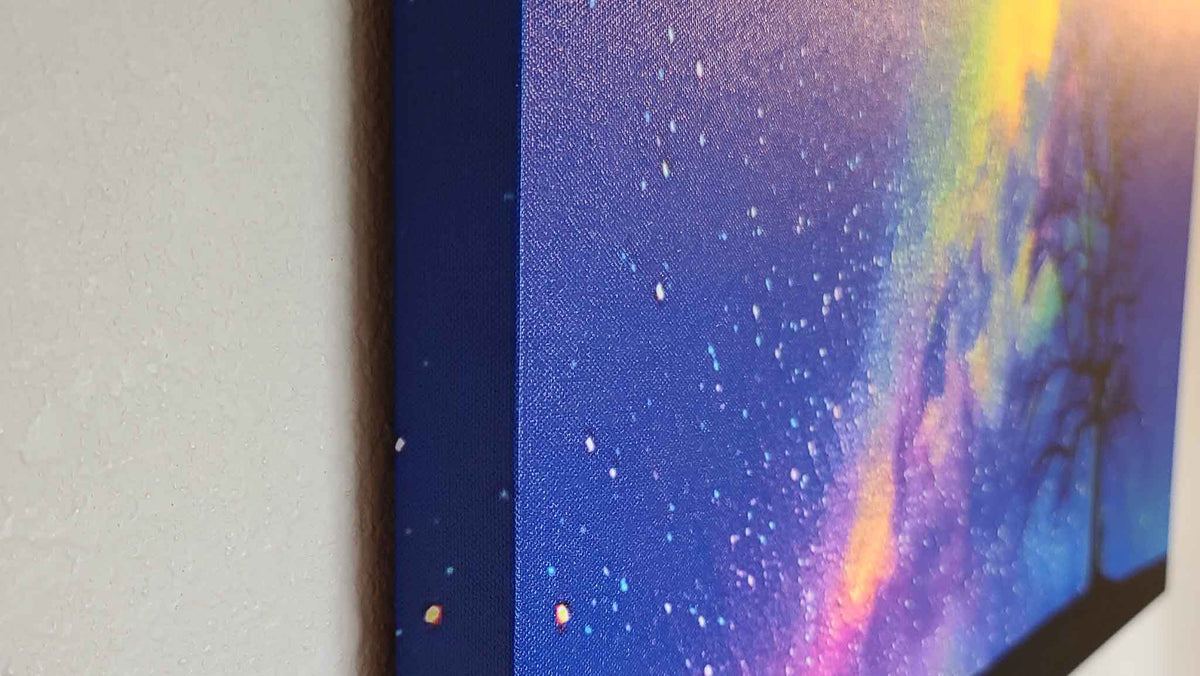How to Properly Clean and Maintain Your Canvas Art

How to Properly Clean and Maintain Your Canvas Art
Choosing the Right Cleaning Solutions for Canvas Prints
To keep your canvas prints in pristine condition, it's crucial to know the proper cleaning methods. Although cleaning canvas prints is relatively simple, it's important to avoid exposing them to environments that generate smoke or other fumes, like bathrooms or unfinished basements. Additionally, refrain from using your fingernails to clean the print, as this could scratch the surface.
Most canvas prints can be cleaned with basic cleaning solutions. A damp microfiber cloth is effective for wiping away dust and dirt without damaging the print. Be cautious not to let water drip onto the canvas, and avoid chemical-based cleaners, as they can damage the UV coating and potentially strip the print of some of its ink. Moreover, chemical cleaners may harm the canvas surface, making it more challenging to clean.
Regularly Cleaning Your Canvas Wall Art

Over time, dust and grime accumulate on canvas wall art. To remove this buildup, use a damp cloth, a microfiber cloth, or a cotton swab to gently wipe the surface. Avoid harsh rubbing, and rinse the cloth with clean water to remove any soap residue.
To prevent damage from humidity and moisture, avoid hanging your canvas prints in moist areas like bathrooms and unfinished basements. Cleaning your canvas prints regularly is essential for their preservation, as neglecting them may lead to degradation.
Can Canvas Art Get Wet?

Although the material of the canvas is waterproof, moisture can still seep into the fabric surface and weaken the fibers. This can result in the formation of mildew and warping of the print. To protect a canvas print with a wooden frame, use a spray that resists sulfuric acid and moisture to prevent mildew damage.
Cleaning a Picture Without Ruining It
To clean a canvas picture without causing damage, follow these steps:
- Remove any dirt or grime from the surface of the picture using warm distilled water and a clean cotton swab. Gently scrub the picture in an upward motion from top to bottom, allowing it to dry completely afterward.
- Use a vacuum cleaner with a blowing feature to remove stubborn dust lodged deep within the canvas.
- Gently brush the surface with a soft brush or use a cotton swab to clean the frame's stretcher grooves.
- Mix a mild dish detergent with warm water to create a paste to remove greasy marks. Allow the canvas to dry before storing or rehanging it.
Cleaning Acrylic Paintings
If your acrylic painting is still wet, use a solvent-based cleaner to remove the paint, which can be found at most natural food stores or retailers like Target. After using the cleaner, soak the brush for about 30 minutes and gently comb the bristles. Rinse the brush and allow the painting to air-dry overnight. Keep in mind that some solvents may damage the canvas surface, so it's essential to work in a well-ventilated area when cleaning acrylic paintings.
Steam Cleaning Canvas: Is It Safe?
In general, it's best to leave canvas cleaning to professionals. However, if you decide to clean the canvas yourself, follow these guidelines:
- Test the cleaning solution on a small, inconspicuous area of the canvas before proceeding with the full cleaning.
- Avoid attempting to clean a canvas with visible damage.
- Place the print in a well-ventilated area and avoid placing heavy objects on top of it.
- Regularly dust the canvas with a fine linen cloth and clean it as frequently as other decorative items in your home.
- Use a cotton swab soaked in warm distilled water, and be gentle to avoid rubbing or squeezing the print. Do not use harsh chemicals that could damage the canvas print.
Protecting Your Canvas Painting
Preserving the beauty and quality of your canvas paintings is vital. Here are some steps you can follow to protect your artwork:
- Hang the painting on a smooth, flat surface, avoiding contact with hard or sticky objects that could damage the paint or frame.
- Place the painting in an area with natural light but not direct sunlight, as this can cause fading.
- Maintain room temperature between 65 and 75 degrees Fahrenheit to create a favorable environment for the artwork.
- Consider wrapping the canvas painting in a protective material like Plexiglass, cotton, nylon, or felt to shield it from potential damage.
Additionally, shield your canvas paintings from ultraviolet light, as UV rays can cause fading and yellowing. Direct exposure to sunlight may also lead to the canvas's discoloration.
How to Store Canvas Art

Proper storage is crucial when rotating your home décor, as common but mildly acidic chemicals in the home can damage the canvas surface. Here are some tips for storing your canvas art safely:
- Choose a cool, dry, and dark place to store your canvas paintings. Avoid areas with high humidity or temperature fluctuations.
- Wrap the canvas in acid-free tissue paper or glassine paper to protect it from dust and other contaminants.
- Store the wrapped canvas in a sturdy cardboard or wooden box with padding or separators to prevent any damage from pressure or movement.
- Store the paintings vertically, with the largest ones at the bottom and the smallest ones on top. Avoid stacking them horizontally, as this could damage the frames and the canvas.
By following these steps, you can ensure your canvas art remains in excellent condition, whether it's on display or in storage.
In conclusion, cleaning and maintaining your canvas art is crucial for preserving its beauty and prolonging its lifespan. By using the appropriate cleaning solutions, avoiding harsh chemicals, and protecting the artwork from moisture and sunlight, you can keep your canvas prints looking their best for years to come. Don't forget to store your art pieces properly when not in use, and consider consulting a professional art cleaner if you're unsure about any aspect of the cleaning process.
Leave A Reply
Your email address will not be published. Required fields are marked *






